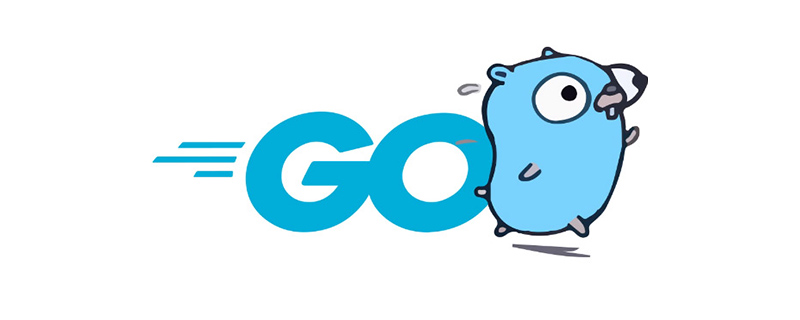

Example: Find the two numbers before and after in the string 1000abcd123.
Example 1: Example of matching this string
package main
import(
"fmt"
"regexp"
)
var digitsRegexp = regexp.MustCompile(`(\d+)\D+(\d+)`)
func main(){
someString:="1000abcd123"
fmt.Println(digitsRegexp.FindStringSubmatch(someString))
}The above code output:
[1000abcd123 1000 123]
Example 2: Using named Regular expression
package main
import(
"fmt"
"regexp"
)
var myExp=regexp.MustCompile(`(?P<first>\d+)\.(\d+).(?P<second>\d+)`)
func main(){
fmt.Printf("%+v",myExp.FindStringSubmatch("1234.5678.9"))
}The above code output, all matching ones are output:
[1234.5678.9 1234 5678 9]
The Named capturing groups (?P
Example 3: Extend the regular expression class with a method to obtain all naming information and use it.
package main
import(
"fmt"
"regexp"
)
//embed regexp.Regexp in a new type so we can extend it
type myRegexp struct{
*regexp.Regexp
}
//add a new method to our new regular expression type
func(r *myRegexp)FindStringSubmatchMap(s string) map[string]string{
captures:=make(map[string]string)
match:=r.FindStringSubmatch(s)
if match==nil{
return captures
}
for i,name:=range r.SubexpNames(){
//Ignore the whole regexp match and unnamed groups
if i==0||name==""{
continue
}
captures[name]=match[i]
}
return captures
}
//an example regular expression
var myExp=myRegexp{regexp.MustCompile(`(?P<first>\d+)\.(\d+).(?P<second>\d+)`)}
func main(){
mmap:=myExp.FindStringSubmatchMap("1234.5678.9")
ww:=mmap["first"]
fmt.Println(mmap)
fmt.Println(ww)
}
The output of the above code:
map[first:1234 second:9] 1234
Example 4, capture the number restriction information and record it in a Map.
package main
import(
"fmt"
iconv "github.com/djimenez/iconv-go"
"io/ioutil"
"net/http"
"os"
"regexp"
)
// embed regexp.Regexp in a new type so we can extend it
type myRegexp struct{
*regexp.Regexp
}
// add a new method to our new regular expression type
func(r *myRegexp)FindStringSubmatchMap(s string)[](map[string]string){
captures:=make([](map[string]string),0)
matches:=r.FindAllStringSubmatch(s,-1)
if matches==nil{
return captures
}
names:=r.SubexpNames()
for _,match:=range matches{
cmap:=make(map[string]string)
for pos,val:=range match{
name:=names[pos]
if name==""{
continue
}
/*
fmt.Println("+++++++++")
fmt.Println(name)
fmt.Println(val)
*/
cmap[name]=val
}
captures=append(captures,cmap)
}
return captures
}
// 抓取限号信息的正则表达式
var myExp=myRegexp{regexp.MustCompile(`自(?P<byear>[\d]{4})年(?P<bmonth>[\d]{1,2})月(?P<bday>[\d]{1,2})日至(?P<eyear>[\d]{4})年(?P<emonth>[\d]{1,2})月(?P<eday>[\d]{1,2})日,星期一至星期五限行机动车车牌尾号分别为:(?P<n11>[\d])和(?P<n12>[\d])、(?P<n21>[\d])和(?P<n22>[\d])、(?P<n31>[\d])和(?P<n32>[\d])、(?P<n41>[\d])和(?P<n42>[\d])、(?P<n51>[\d])和(?P<n52>[\d])`)}
func ErrorAndExit(err error){
fmt.Fprintln(os.Stderr,err)
os.Exit(1)
}
func main(){
response,err:=http.Get("http://www.bjjtgl.gov.cn/zhuanti/10weihao/index.html")
defer response.Body.Close()
if err!=nil{
ErrorAndExit(err)
}
input,err:=ioutil.ReadAll(response.Body)
if err!=nil{
ErrorAndExit(err)
}
body :=make([]byte,len(input))
iconv.Convert(input,body,"gb2312","utf-8")
mmap:=myExp.FindStringSubmatchMap(string(body))
fmt.Println(mmap)
}The above code output:
[map[n32:0 n22:9 emonth:7 n11:3 n41:1 n21:4 n52:7 bmonth:4 n51:2 bday:9 n42:6 byear:2012 eday:7 eyear:2012 n12:8 n31:5] map[emonth:10 n41:5 n52:6 n31:4 byear:2012 n51:1 eyear:2012 n32:9 bmonth:7 n22:8 bday:8 n11:2 eday:6 n42:0 n21:3 n12:7] map[bday:7 n51:5 n22:7 n31:3 eday:5 n32:8 byear:2012 bmonth:10 emonth:1 eyear:2013 n11:1 n12:6 n52:0 n21:2 n42:9 n41:4] map[eyear:2013 byear:2013 n22:6 eday:10 bmonth:1 n41:3 n32:7 n31:2 n21:1 n11:5 bday:6 n12:0 n51:4 n42:8 emonth:4 n52:9]]
For more go language knowledge, please pay attention to the go language tutorial column on the PHP Chinese website.
The above is the detailed content of Go language uses regular expressions to extract web page text. For more information, please follow other related articles on the PHP Chinese website!
 Usage of Type keyword in Go
Usage of Type keyword in Go
 How to implement linked list in go
How to implement linked list in go
 What are the Go language programming software?
What are the Go language programming software?
 How to learn go language from 0 basics
How to learn go language from 0 basics
 What are the methods to implement operator overloading in Go language?
What are the methods to implement operator overloading in Go language?
 What are the operators in Go language?
What are the operators in Go language?
 How to remove other people's TikTok watermarks from TikTok videos
How to remove other people's TikTok watermarks from TikTok videos
 How to restore IE browser to automatically jump to EDGE
How to restore IE browser to automatically jump to EDGE